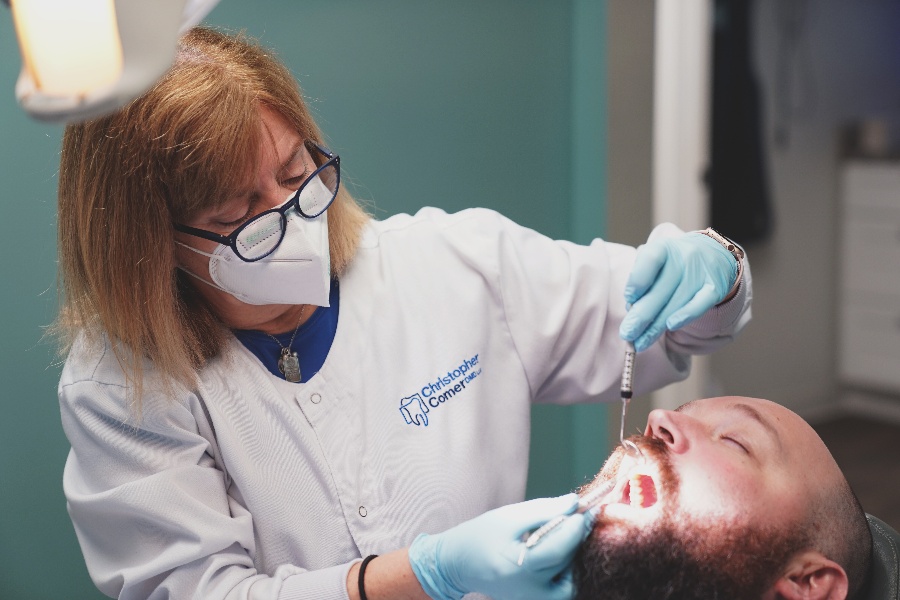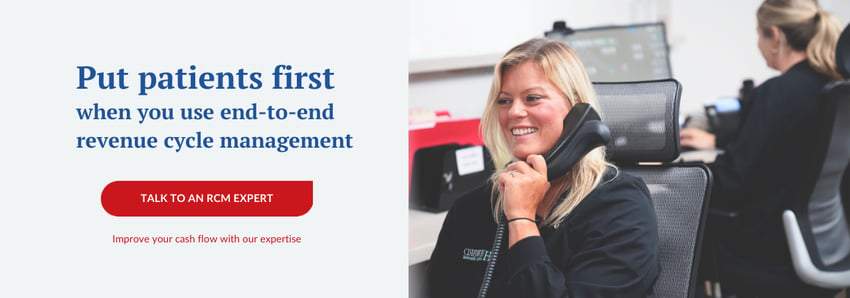5 ways to cut dental practice expenses without lowering quality


As a leader in your dental practice, you are always looking to manage dental practice expenses. But you keep running into roadblocks that seem to prevent you from having a healthy cash flow, happy employees, and satisfied patients.
There are problems all around your dental practice that could be increasing your dental practice expenses. These might not be obvious problems, but they can be more costly than you think.
Dental ClaimSupport helps dental teams deliver an excellent patient experience by handling insurance claims so that you can focus on your patients. Through 10 years of service, we’ve seen certain problems reoccur that increase your dental practice expenses.
In this article, we’re sharing 5 problems that lead to increased expenses thus lowering your profits. We then will provide you with solutions to each problem. Using these tips to avoid costly issues can help your dental practice be more profitable, and help your team stay more organized while creating an amazing patient experience.
1. Frequent last-minute patient cancellations or no-shows
Your patients are your source of revenue. And when they cancel their appointments, you’re missing out on that revenue.
If cancellations are beginning to become more frequent, it’s going to begin affecting your bottom line. You need that revenue to keep your business running, pay your employees, and pay yourself!
Frequent patient cancellations are a HUGE problem, probably one of the biggest on this list. Especially because it can affect the oral health of your patients if they aren’t receiving prompt treatment when they need it. You can’t control what others do, but you can control how you improve your processes. This leads us to the solution.
Solution: Implement a streamlined patient schedule and follow-up process
Make your patient scheduling process as easy as possible. This means you might have an availability calendar online. Your patients can make appointments, and you immediately send them a confirmation of the time and date.
This confirmation should be sent via email and text. You can even send email and text reminders the month before, the week before, and the day before. If you’re doing this and still seeing cancellations, consider implementing a no-show fee.
This means that you charge a fee for patients that cancel less than two business days before their appointment. Taking these steps to add a little bit of pressure for patients to show up for their appointments can be very effective.
If you have openings in your schedule due to cancellations or no-shows, look at your existing schedule for the day. Consider offering same-day treatment options to your patients who may be scheduled with the doctor or the hygienist if your schedule allows.
You never know when the hygiene patient may need treatment and may want to save a trip to come back or when the dentist’s patient may want their re-care appointment after or before the restorative appointment that same day.
You may want to also look at your “Sooner if Possible” (SIP) report for patients who are scheduled but maybe want an earlier appointment if one becomes available. Every software has this type of report.
2. Lack of safeguards against embezzlement
Embezzlement is a common problem at dental practices, and it is typically committed by an in-house team member. It can happen when you have the same person who is responsible for posting the payments and also being responsible for the bank deposits.
They might be putting away just a few dollars here and there, but over time, the amount they are stealing from you can begin to add up. Not to mention the obvious fact - it’s illegal! This is a problem you might not even be sure is there - but there are a few ways to lessen the risk of embezzlement happening to your practice.
-1.jpg?width=534&name=DSC01142%20(1)-1.jpg)
Solution: Give your employees limited access to your bank account and have more than one person overseeing and reconciling your posted payments
You can reduce the risk of embezzlement in your practice by following a few simple steps.
Only give limited online bank account access to specific information such as deposit reports. The actual deposit report lists all deposits such as EFT/ERA, credit card batch, and cash/check deposit slip banking reconciliations to compare with your practice management software reports.
Your bank statement reports of deposited revenue amounts should be identical to your practice management reports of deposits. Your team can be allowed to deposit checks, and post payments, but as long as they have very limited access to your bank records. For example, if you only allow “view only,” access to your account, there shouldn’t be a problem.
Pay close attention to your monthly merchant statement (credit card processing/bank) and reconcile it with your practice management software credit card deposits and refund reports.
Review ALL refunds and be sure that they are reported on the patient on your practice management reports and your merchant daily batch. If you see a lot of refunds or an especially high refund, you may want to do an internal audit as this could be a red flag.
With this in mind, we also recommend having more than one person responsible for balancing and closing out your daily reports. This includes your practice daily deposit totals. Keep a very close eye on your credit card refunds and your monthly merchant services (credit card processing) reports.
This will ensure that more than one set of eyes are on your numbers every day.
3. Unnecessary reliance on mail and postage
Are you still sending your patients' statements via paper snail mail? It might seem small, but as inflation rises, so does the cost of postage, envelopes, paper, printer ink, and employee time printing, folding, stuffing, sealing, stamping, and mailing a statement.
All of the time, money, and effort it takes to print, organize and mail statements to patients can be costly. Even buying ink for printers can sometimes cost more than just buying a new printer! It also will likely be tossed aside by the patient, so it is pretty wasteful.
Solution: Go paperless
Many dental practices are transitioning to paperless billing. This means they’re emailing statements to patients. This could also be a payment portal online that allows patients to use their credit card, Paypal or Apple Pay to pay their balance.
This is a great way to get paid quicker and cut down on postage costs. Paying online is also much more convenient for patients. It’s a win-win!
4. An inefficient dental billing process
This is definitely a problem you might not be sure you have - but if you’ve noticed your insurance collections are low, and your insurance aging report is growing, it’s time to revisit how well your insurance billing process is serving you.
There are a few reasons this could be happening at your practice. A big one is that you don’t have the right person in place to handle your insurance claims process. We’re not telling you to fire anyone - but the person currently responsible for your insurance billing might have other tasks on their plate as well.
This means they don’t have the time to devote to your insurance claims. Insurance claims work is time-consuming and detail-oriented. Even one extra responsibility can prevent your team member from properly submitting insurance claims. This leads to denials, which leads to delays in payment from insurance companies.
If your dental billing process isn’t in a good place, it’s going to decrease your insurance claims income and lower your profits.
Solution: Outsource your insurance claims process
When you have a clear, accurate, and compliant billing process, running your practice is easy and profitable. This is possible when you find a dental billing partner to handle your insurance claims. When you outsource to a dental billing company, you’re letting a team of experts see your claims from start to finish. And their one goal is to do what it takes to get you paid.
With this expertise, your insurance claims are taken care of, and you will see your insurance collections percentage rise, and cash flow into your practice more frequently.
Not to mention, your practice is easier to run when you can count on a worry-free claims process.
5. Using Outdated software and processes
When was the last time you updated your practice management software?
It should be every year, as there are annual insurance and CDT code changes. You should also be evaluating the performance of your practice management software every year.
Is it at the price point you want? Is it performing efficiently for your team? Does it provide the features you need to be successful? Do you have usernames and unique passwords for each team member with the proper security setting?
Same idea for your processes - when was the last time you revisited the way your entire dental billing process runs? How do you handle your insurance verification process? How often are you submitting insurance claims and posting payments? Is the insurance aging report often neglected?
Revisiting these processes can help you be more profitable. With technology changing so frequently, there are always new ways to improve efficiency that you could be taking advantage of.
Solution: Modernize and update when possible
We’re not telling you to hop on every trend every week. But if you do see an opportunity for improvement, do something about it!
Practice management software training is vital to the growth of any practice, especially after significant updates. The most successful practices invest in their team by providing them with continuing education options or requirements.
Make sure your team is educated on the workflow of all of your automated systems. Like the example we mentioned earlier - an online patient payment portal could be a great way to modernize your practice and collect more easily from patients. Using technology like automation can make workflows quicker and easier for your team. Another example we mentioned was automated email and text reminders.
Instead of your team calling patients every day to remind them of their upcoming appointments, set up the software to send out automated reminders and update the patients who are confirmed in the software automatically.
Obtain the updated annual CDT codes and have your software vendor load the updated list. Reevaluate your practice fees, consider negotiating your in-network fee allowances, and don't forget to update them in the software.
Ready to generate more revenue through outsourcing your billing?
There are always going to be problems that might cost you money at your practice. The key is to keep your processes innovative, do everything to improve your patient’s experience, and take advantage of tools that can make your work easier.
Dental ClaimSupport is just one of those tools that can take over your insurance claims so that you can focus on patients and improve other parts of your practice.
To learn more about how outsourcing can make your practice more efficient, schedule a call with one of our experts.
Related Posts
Dental revenue resources from Dental Claim Support


